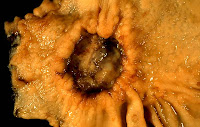 Yo kid, whatcha drinkin’? Not water, that’s for sure. A recent study to be published in the October issue of the American Journal of Clinical Nutrition, shows that children in the U.S. are drinking far too little water. Since water makes up the bulk of the human body weight, getting sufficient amounts is vital. And since we can’t store water for the long term, running on a water deficiency can wreak havoc on the health.
Yo kid, whatcha drinkin’? Not water, that’s for sure. A recent study to be published in the October issue of the American Journal of Clinical Nutrition, shows that children in the U.S. are drinking far too little water. Since water makes up the bulk of the human body weight, getting sufficient amounts is vital. And since we can’t store water for the long term, running on a water deficiency can wreak havoc on the health.
According to the study conducted by the Queens College of the City University of New York and the U.S. National Cancer Institute, American children drink far less than the minimum amount of water recommended by the U.S. Institute of Medicine. The study looked at the water intake of 3,978 boys and girls, aged 2 to 19 years, who had been included in a national nutrition study from 2005 to 2006. They found that only 15-60% of boys and 10-54% of girls, depending on age, drink enough water. Instead, children are primarily drinking…yup, you guessed it, sugary drinks like sodas.
The study found that most kids drank sweetened beverages with meals and not plain water. Yecchh! And girls overall drank less water than boys. The good news is that as children age, they start to drink a bit more water, but not enough to preserve good health. Let’s go over some points on the importance of proper hydration:
- Human beings cannot live without water for a few days
- We lose approximately two liters of water per day through sweat, urine, tears, saliva and the breath, among other processes
- Caffeinated drinks–sodas, iced tea, coffee drinks–are diuretics, which make us urinate more, thus increasing the need for water
- Insufficient water levels lead to
- fatigue
- increased hunger
- muscle weakness
- headaches
- dry mouth
- heat stroke and other maladies
 Furthermore, high consumption of sugary drinks leads to…yes, right again, obesity (along with other illnesses like diabetes). And you heard childhood obesity is due to the common cold virus, now, didn’t you?
Furthermore, high consumption of sugary drinks leads to…yes, right again, obesity (along with other illnesses like diabetes). And you heard childhood obesity is due to the common cold virus, now, didn’t you?
Listen, adults in the U.S. aren’t doing much better. Sodas are still the number one consumed beverage in America. And kids learn from their parents, so if you are a soda junkie, don’t expect less from junior.
 Simple solution: stop buying soda! If you have younguns at home, don’t give them any of that crap, period. My girls have never tasted a soda in their lives, and they won’t ever in our house. Yes, I’m on a soapbox on this one, and I’m not getting off anytime soon. That garbage is killing people, and I’ll keep screaming it till people listen.
Simple solution: stop buying soda! If you have younguns at home, don’t give them any of that crap, period. My girls have never tasted a soda in their lives, and they won’t ever in our house. Yes, I’m on a soapbox on this one, and I’m not getting off anytime soon. That garbage is killing people, and I’ll keep screaming it till people listen.
Water is the elixir of life, and if you or your child are not getting enough, then you’re playing with fire. Play with water instead, give your kids good ol’ H2O to drink and watch them flourish. It’s in your hands parents–do the right thing.
















